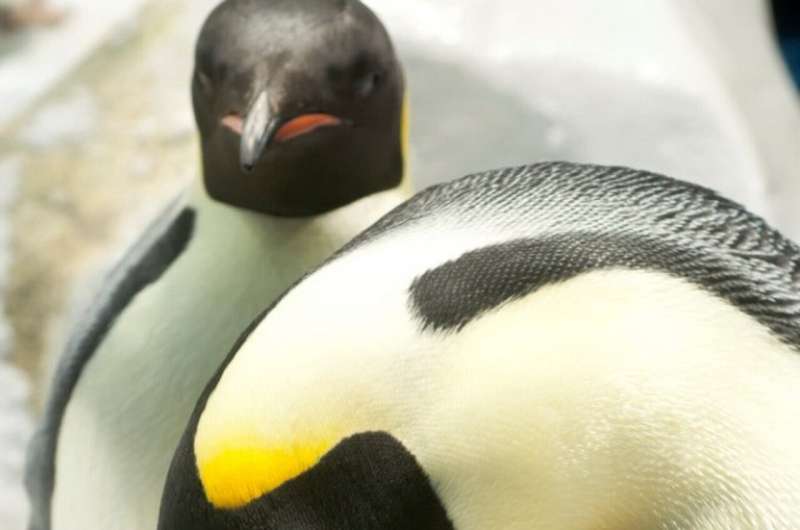This article has been reviewed according to Science X's editorial process and policies. Editors have highlighted the following attributes while ensuring the content's credibility:
fact-checked
trusted source
proofread
A penguin with an unconventional call inspires researchers to change how they study penguins

An emperor penguin's sex determines the nature of their courtship call—male vocalizations are composed of long, slow bursts with lower frequency tones than the female version. But calls of SeaWorld San Diego male penguin E-79 caught the attention of researchers by defying this binary. Also unusual was this penguin's male companion, E-81. The pair "kept company" and sometimes exhibited ritual courtship displays.
Researchers from Applied Ocean Sciences, the Marine Technology Society, Hubbs SeaWorld Research Institute, and SeaWorld San Diego investigated the courtship calls of E-79 and E-81. Kerri Seger presented their as part of a joint meeting of the Acoustical Society of America and the Canadian Acoustical Association, held May 13–17 at the Shaw Center located in downtown Ottawa, Ontario, Canada.
The emperor penguin courtship display includes strutting, bowing, emitting the distinctive call, and swinging the head. This courtship display is also exhibited in other social contexts, especially around chicks and juvenile penguins.
"The sound isn't melodious by comparison with songbird calls—it has been likened to a malfunctioning starter motor," said bioacoustician Ann Bowles. "Our interest was in the timing of the calls, which are composed of a series of noisy bursts. A lot of individual information is encoded in the timing of these bursts."
Unexpected vocalizations like E-79's could indicate a developmental or health issue or genetic anomaly. However, the team couldn't address questions about the bird's condition without taking a very basic step—they had to quantify the range of variability in "normal" calls of other emperor penguins and compare them to E-79's calls in detail. Not only did they need to record the birds in their below-freezing enclosure, but they also had to refine the usual technique for analyzing the bursts.
"We found that if we looked at the bursts overall, they were structured mainly like the male-type calls, but they contained little initial amplitude peaks in front of many bursts and a series of very short peaks in one of the long central bursts that would not have been typical of adults of either sex," Seger said.
The team hypothesizes that the feminine or juvenile qualities of E-79's bursts could partially explain E-81's interest.
Refining the technique to study penguin calls has important applications beyond E-79.
"Seabird calls haven't received anything like the attention that songbirds get, partly because they're difficult to analyze," said Seger.
"We're hoping new approaches like the one we're working on will help. These calls can be indicators of developmental differences, health, reproductive state, or genetic makeup. Emperors are now considered to be at risk because of changing ice conditions in the Antarctic. Tools for assessing their condition or reproductive state remotely could be very helpful for assessing large numbers safely."
More information: Technical program: https://eppro02.ativ.me/src/EventPilot/php/express/web/planner.php?id=ASASPRING24
Provided by Acoustical Society of America




















